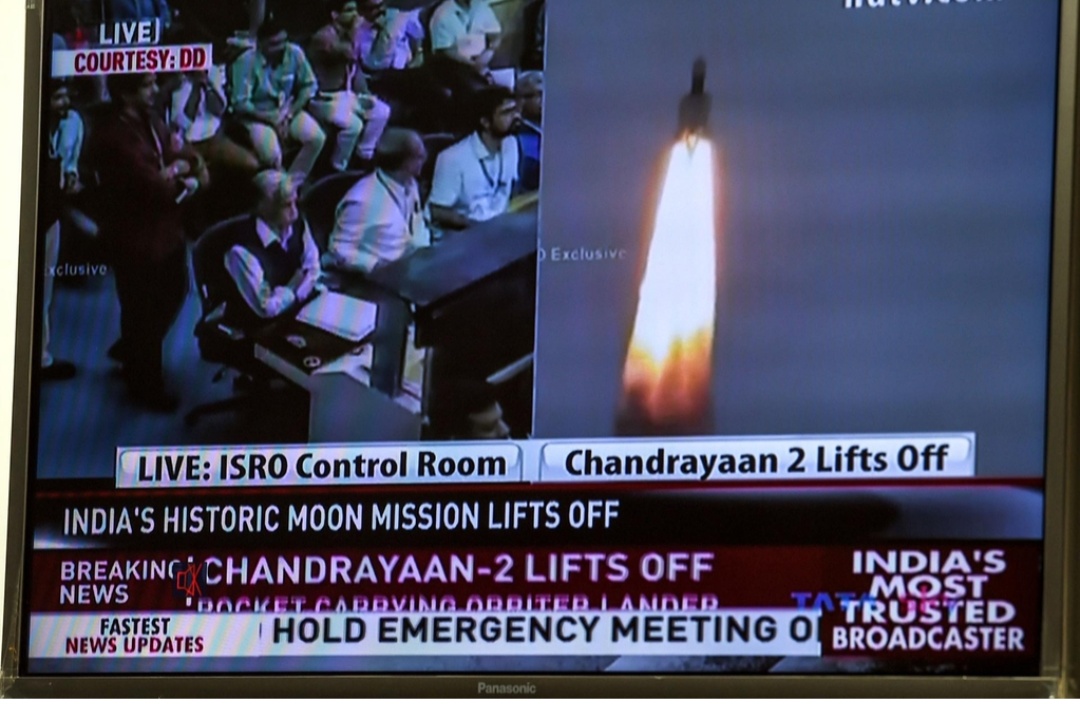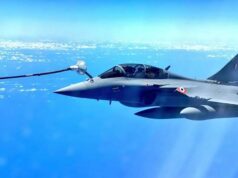Chandrayaan 2 Now Heading for Chandrama

The chandrayaan -I mission made India the fourth country after Russia, USA and Japan to carry out a controlled crash landing and plant its flag on Chandrama. The mission ended under a year from launch: but left behind a project for India to take forward. While Chandrayaan-I put India in top space league, its successor has taken the country to frontline of the race in tapping lunar clues for more space missions.
India’s rocket carrying an orbiter, lander and a rover is now on its mission to uncover lunar secrets. Launched into space after a minor glitch now it is heading for its lunar destination. The launch, originally slated for the early hours of last Monday, was aborted after a pressure drop in one of the tanks in the upper stage of the rocket.
The launch vehicle, the GSLV Mk-3, is the country’s most powerful rocket to date. The 640-tonne rocket, capable of carrying 4-tonne satellites, placed the Chandrayaan in the Earth Transfer Orbit approximately 16.2 minutes after take-off. This was the first operational flight of GSLV-Mk-3.
The Chandrayaan-2, a Rs 978-crore project, is on course to place the country in a niche league of nations populated by the Russia, USA, Japan, India and China that have successfully conducted a landing. The lander will touch in the region of the south pole an unexplored territory, according to ISRO.
The target is to find more evidence of water, clues about Chandrama’s ’s evolution and work the natural satellite as a test bed for more space missions concerning the solar system. Chandrayaan-II will primarily study the elements on surface, map its topography through high-resolution pictures, study its minerals and most importantly, confirm sub-surface water/ice presence.
“Advanced synthetic aperture radar in Chandrayaan-2 has the ability to look for water—identify the presence of water rise at depths of a few meters: an important input for sustaining a future human presence on the moon,” said P Sreekumar, Director-SSPO, ISRO, in an official video from the space research organisation.
From launch till landing, there will be several spots of complex manoeuvre. From the earth’s orbit, it will be tranferred to a lunar trajectory that will sling-shot the spacecraft towards the moon through a series of complex operational changes. Later, thrusters on-board will enable descent of the spacecraft into a lunar orbit; the lander will detach from the orbiter and choose a right spot for landing even as its applies brakes to soften the landing.
The Chandrayaan-II had many risk-intensive areas in its course; its technology and software capabilities are also indigenously developed.
According to ISRO Chief K Sivan, its most crucial moment arrives in a soft-landing on the surface of the moon, a feat few nations have managed so far. The 1.4-tonne Lander, Vikram, will be alive for 14 earth days, or one day in the moon. It can communicate with the orbiter 100 km from the surface of the moon, and ISRO’s earth station near Bengaluru.
When Chandrayaan-II soft-lands successfully in early September on the lunar surface, it would 53 years since the first time it was done by a Soviet mission called Luna 9 in January 1966, according to NASA’s web site. A soft landing means igniting an engine at the right altitude and angle to the moon to begin a “retrofire,” in order to decelerate the lander upon the moon. Once landed, the rover will roll out and perform experiments.
The orbiter will continue its mission for a year.
For scientists at the ISRO, the seconds before and during the launch of the rocket are full of challenges they have been working for years. India launched its first mission in 2008, a 1.3-tonne project launched in October 2008 that orbited the lunar body, equipped with terrain mapping cameras to make remote observations.
The mission, which carried scientific instruments from eleven nations including the US, the UK and Germany, had an impact probe crash on the Chandrama’s surface and ended prematurely but gave India proper clues about water presence on Chandrama.



